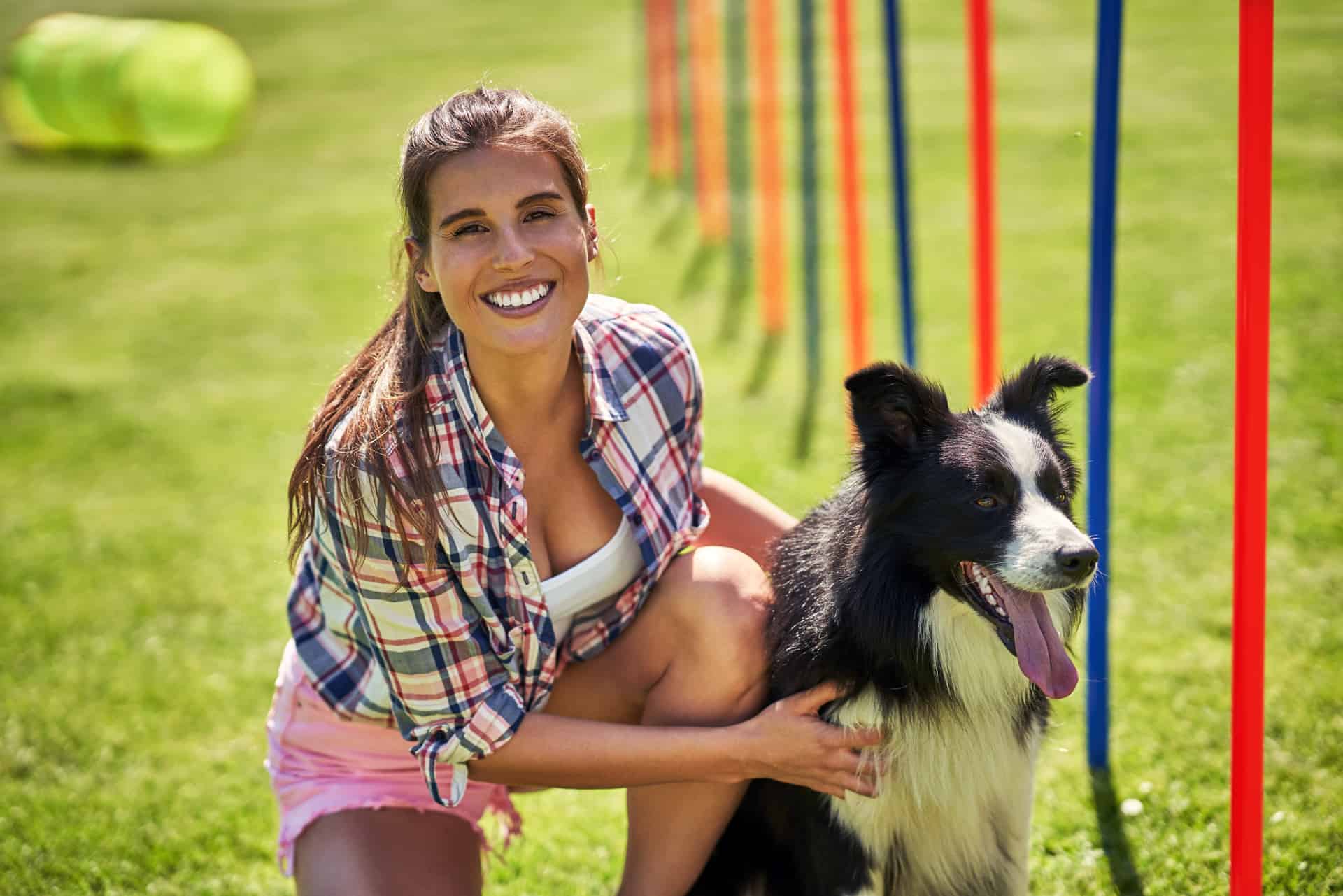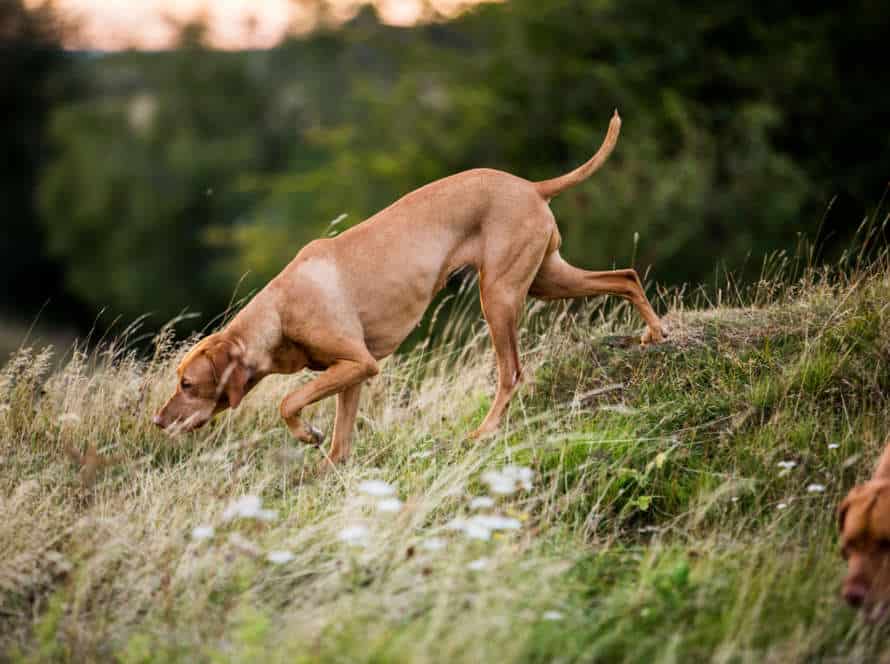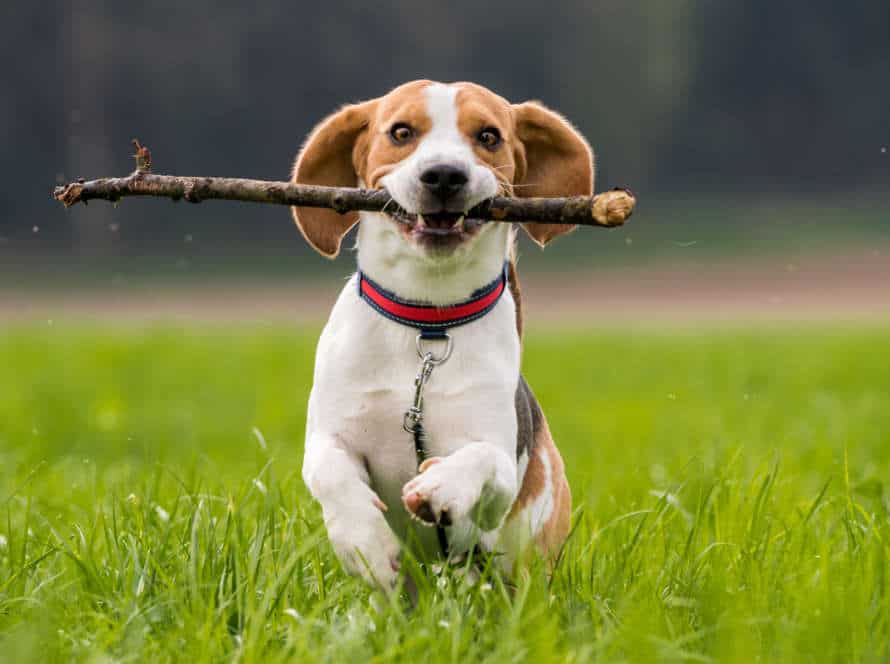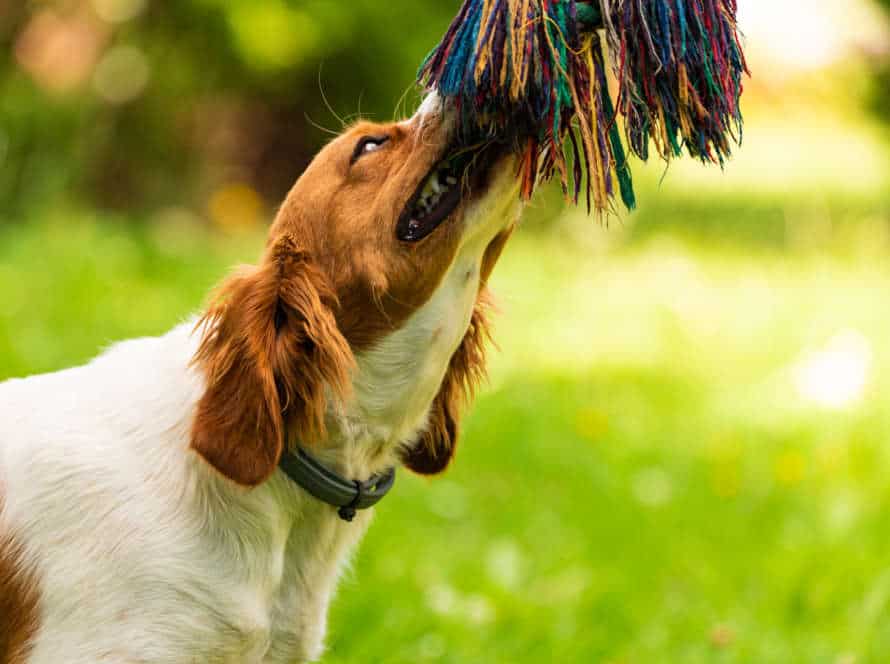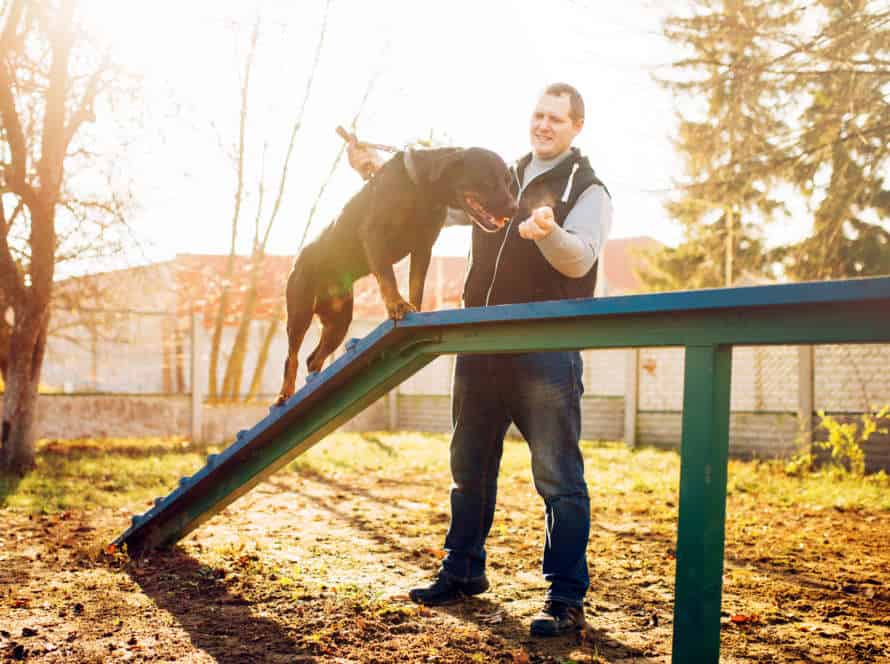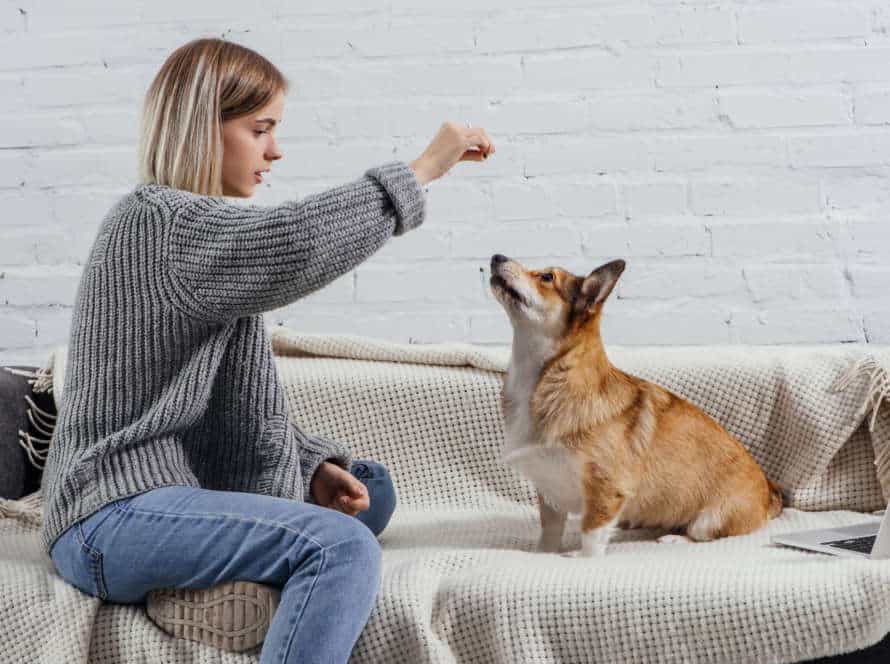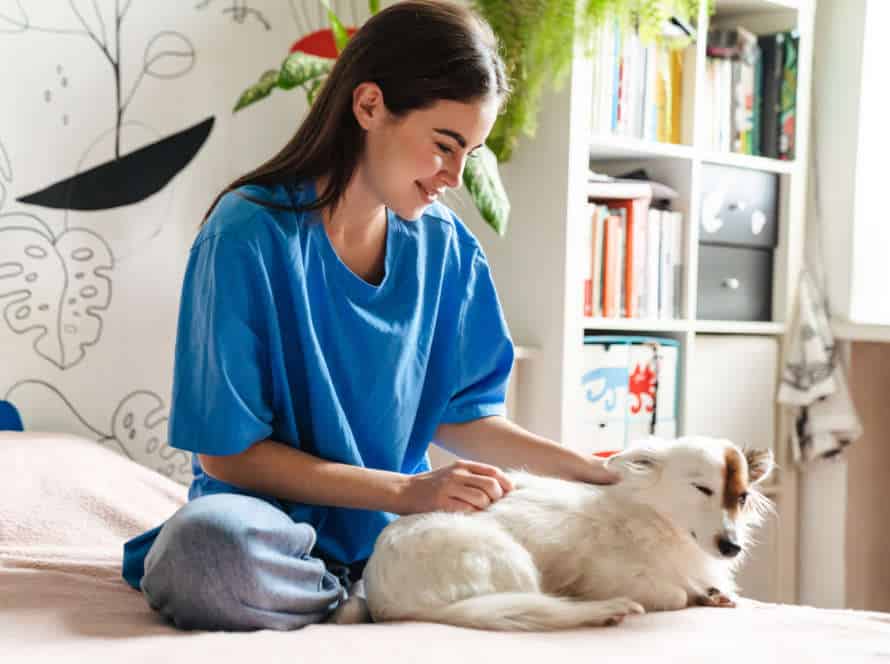Agility Training for Adult Dogs: Enhancing Physical and Mental Fitness
Agility training is a popular way to enhance physical and mental fitness for adult dogs. Obstacles such as weave poles, tunnels, jumps, and more must be navigated quickly and accurately. It’s a great way to bond and provide an outlet for energy.
Benefits of agility training for adult dogs include improved coordination, balance, and endurance. Plus, problem-solving skills, mental stimulation, and socialization. To get started, hire a professional or purchase an agility course kit online.
Remember: Check your dog’s physical health before starting. Begin with simple exercises and increase the difficulty level according to the dog’s fitness. Don’t forget to hydrate your dog before and after training sessions.
The Benefits of Agility Training for Adult Dogs
Agility training is great for adult doggy fitness! It’s a fun way to let your pup burn energy and stay active. Plus, it helps with balance, coordination, and stamina. Not to mention, obedience, focus, and self-confidence.
Let’s look at more advantages of agility training for adult pooches!
Improved Physical Fitness
Agility training can really help to boost adult dogs’ physical and mental fitness. Let’s take a look at how it can help:
Physical fitness: Agility exercises, like jumping, tunnels, and weave poles, can help dogs become more agile, balance better, increase their endurance, and gain coordination. It also gives them a full-body workout, which keeps them in shape, builds muscle strength, and reduces their risk of developing bone-related conditions, like arthritis.
Mental fitness: Agility training needs focus and concentration, so it helps with their cognitive abilities, spatial awareness, and problem-solving skills. Plus, it makes them feel proud and boosts their confidence.
Pro tip: For the best results, get professional trainers to show your dog the ropes. Also, invest in high-quality agility training equipment that fits them!
Enhanced Mental Stimulation
Agility training is a great activity to stimulate adult dogs mentally and physically. It brings several benefits too! Here are a few:
- Improved problem-solving & decision-making. Agility exercises help dogs make fast decisions, boosting their problem-solving skills.
- Higher physical endurance. Dogs get better cardiovascular health and better endurance with agility training.
- Enhanced confidence & reflexes. It boosts the dog’s cognitive ability, building more confidence & sharpening their reflexes.
- Reduced stress. Agility training is a great way for dogs to release excess energy, reducing stress and anxiety.
Agility training is enjoyable and interactive for dogs. It is a holistic approach to canine development, helping them grow mentally and physically.
Strengthened Bond with Owner
Agility training is a great way to bond with adult dogs and keep them physically and mentally fit. It involves running, jumping and maneuvering through a course of obstacles, like jumps, tunnels and weave poles, with speed and accuracy. As dogs learn to master the course and respond to their owner’s commands, the bond between them grows. Plus, agility training helps keep dogs physically fit and stimulates their mental faculties. So if you want to strengthen the bond between you and your furry friend while keeping them healthy, agility training might be the perfect activity for you both.
Preparing for Agility Training
Get ready! Agility training can be a fun and rewarding experience for you and your adult pup. Before you start, make sure your dog is physically and mentally fit to take on the challenge. Here are some tips to get your pup prepped for agility training:
Health Considerations Before Starting
Agility training can be a fun and great way to boost your pup’s physical and mental wellbeing. Still, it’s critical to think about your dog’s health before starting. Here are some factors to keep in mind:
- Age: Dogs should be at least one year old. Puppies are still developing and high-impact exercises could lead to long-term damage.
- Weight: Overweight pooches are more likely to get joint issues and that could be made worse by agility training. Make sure your pup is at a healthy weight before beginning.
- Physical condition: Dogs with pre-existing injuries, joint problems, or heart conditions may not be suitable for agility training. Make sure you get a vet check-up first.
- Breed: Some breeds, like bulldogs, might not be well-suited for high-impact exercises, such as agility training. Do some research on your dog’s breed and consult a vet or trainer prior to starting.
Pro Tip: Always warm up your pup with 5-10 minutes of brisk walking before agility training to stop any injury.
Necessary Equipment for Agility Training
Agility training is a great way to get your pup’s body & mind in shape. You’ll need a few pieces of gear for prepping.
Jumps: These are the most popular, come in different shapes & sizes, and can be adjusted for your dog’s size & skill.
Tunnel: A flexible fabric tube for your pup to run through. Different lengths & diameters to fit your pup’s size & skill.
Weave poles: Line of poles your pup must weave in & out of. Adjustable spacing for your pup’s skill level.
A-Frame: Shaped like an A with a steep incline that your pup must climb & descend. Improves balance & coordination.
Pause table: Low table your pup must jump up onto & stay for a set time. Improves focus & impulse control.
Now you have the essential gear to start agility training with your pup. Have fun!
Pro tip: Make sure your pup is comfortable with the equipment before training.
Finding the Right Training Location
Choosing the right spot for agility training is important for adult dogs’ physical and mental health. Look for a place that has:
- A large and open area, with enough room for agility gear.
- A well-maintained surface with no bumps or potholes.
- A fenced/enclosed area to keep the dog from running off.
- A quiet environment with minimal distractions.
Once you have a good spot, introduce the dog to the equipment slowly. Make sure safety precautions are taken. Pro tip: Reward your pup with treats and praise to make their learning experience enjoyable.
Basic Agility Training Techniques
Agility training boosts both physical and mental fitness in adult dogs! It’s a great way to get them learning new skills, thinking outside the box, and getting physical exercise.
Here’s what you need to know about basic agility training techniques that help dogs stay agile.
Cone Weave
Cone Weave is a beginner agility training technique. It helps with a dog’s physical and mental fitness. To do this, have a straight line of cones. Leave enough space for the dog to pass through.
Leash your dog and guide them through the cones. Use verbal cues and hand gestures. Encourage them to weave in and out of the cones while they move forward. Practice this sequence many times with the leash.
If your pup is confident, take off the leash and let them weave on their own. Gradually increase the speed and distance of the cones. This will challenge their agility and concentration.
Jump Hurdle
Jumping hurdles is a great way to spruce up your pup’s agility routine & boost their physical and mental fitness. Here’s how to teach your dog to hurdle safely:
- Begin with a low hurdle and tempt your pet over it with treats or toys.
- Steadily increase the height of the hurdle as your pup gets more secure & relaxed with jumping.
- Employ positive reinforcement techniques such as rewards, toys, and compliments to motivate your pup’s progress.
- Check that your dog is leaping the hurdle carefully & properly to avoid any harm.
- Keep repeating the process with different obstacles to keep your pup engaged & test their agility abilities.
A-Frame
An A-Frame is a popular tool used in agility training for adult dogs. It helps improve their physical and mental fitness. The A-Frame is a large, triangular obstacle. The dog must climb up one side and down the other. At the bottom, there is a contact zone they must touch with their paws. The A-Frame can be adjusted to different levels of agility. It’s a great way to build strength, confidence, and agility. Plus, it’s mentally stimulating and keeps them happy and healthy.
Pro Tip: Supervise your dog during agility training. Start with low-impact exercises to prevent injury.
Advanced Agility Training Techniques
Agility is perfect for adult pups! It builds strength and coordination. Plus, it’s stimulating mentally. If you want to help your pooch reach their peak, try advanced agility training. Here, we will look at some techniques. They’ll boost your pup’s agility and get them to the top!
Teeter-Totter
Teeter-Totter is an agility training method which can improve the physical and mental fitness of your adult dog. It looks like a seesaw, and your pup must climb onto one end and balance as it tips to the ground.
Follow these steps to train your dog using Teeter-Totter:
- Teach your pup basic agility commands, such as jumping.
- Introduce the teeter-totter in a secure, safe environment.
- Have your pup walk across the stable teeter-totter, with one end held down.
- Increase the height and speed gradually, while making sure your pup stays balanced.
- Regularly practice this technique to help your pup build strength, balance, and coordination.
Pro Tip: Monitor for signs of stress or injury and make the necessary modifications for your pup’s safety during agility training.
Tunnel Crawl
Tunnel Crawl is a great way to get your adult pup fit and sharp! Dogs adore the thrill of slithering through a tunnel. It bolsters their balance, coordination, and problem-solving power, as well as their self-assurance and agility.
To teach your pup Tunnel Crawl:
- Show them the tunnel and let them explore it.
- Close the two ends together and make a narrow passage.
- Utilize treats or toys as positive reinforcement to encourage your pup to go through the tunnel.
- Gradually make the tunnel longer or add obstacles to make it more challenging.
- Keep the training sessions short but consistent, so your pup stays engaged.
Pro Tip: Ensure that the tunnel and the training area are secure and free from any hazards that may hurt your pet.
Dog Walk
Dog walk is an essential part of agility training that can help adult dogs become physically and mentally fit. It involves teaching them to walk on a narrow plank, a few inches off the ground – which requires focus and balance.
Here are the steps for the training:
- Start with a flat board on the ground.
- Then, raise it a few inches.
- Introduce a narrow plank and motivate your dog to cross it with treats and encouragement.
- Gradually raise the height until it’s at the standard level.
- Include turns, stops and different speeds in the routine.
- Always make sure your pup is secure during the process.
Pro tip: Begin with short and frequent training sessions so your dog won’t get tired and will stay engaged.
Agility Training for Dogs with Special Needs
Agility training is great for adult dogs – both physically and mentally. But, you should think about any special needs your dog has before starting. An agility course is a safe, exciting way to boost your dog’s physical and mental fitness while also providing them with important socialization. This article will explain how to adapt agility training for dogs with special needs.
Modifications for Senior Dogs
Training senior dogs for agility needs modifications for their safety and comfort. Here are some:
- Lower jump heights; they might not be able to jump high.
- Wider gaps; this puts less strain on joints.
- Shorter courses with few obstacles; prevents exhaustion.
- Slower pace; rest between obstacles is key.
Pro tip: consult the vet first. They can spot any health risks.
Modifications for Dogs with Disabilities
Agility training isn’t just for fit dogs. It can help dogs with disabilities too! Here are some ways to adapt it:
- Blind dogs: Guide them with strong scents, like essential oils or treats. Give them tactile cues, e.g. a touch or vibration, when jumping or turning.
- Deaf dogs: Use visual cues – hand signals or brightly colored cones. Use a vibrating collar or light-up toy to start and stop.
- Amputee dogs: Make the height and width of obstacles suitable. Use soft surfaces like rubber or foam for landings.
- Senior dogs: Make obstacles lower and narrower. Give plenty of breaks and keep sessions short and fun.
With these tweaks, agility training can bring physical and mental benefits to dogs with disabilities.
Modifications for Overweight Dogs
If your pup is a bit plump, there are some adjustments you can make to help them partake in agility training.
- Firstly, start with low-impact obstacles like tunnels, low jumps and basic weave poles. This’ll help your pup build up their trust and coordination without overworking their joints.
- Secondly, give them more pauses and breaks during agility training. Overweight dogs may need extra time to get their breath back or take a sip of water.
- Thirdly, think about a weight-loss program for your pup. Eating healthy and exercising steadily are vital for doggy weight-loss.
- Lastly, get a veterinarian or a professional trainer to create a tailored agility program for your pup. Not every exercise is created equal for all canines – and a pro can help you make the plan fit your pup’s abilities and limits.
Avoiding Common Mistakes in Agility Training
Agility training for adult dogs is an awesome way to increase their physical and mental fitness! But owners can make mistakes when training their elder dogs. Knowing these mistakes can help you avoid them and give your dog the best experience. Let’s look at these common errors and how to stop them!
Rushing the Training Process
Rushing agility training for adult dogs is a common mistake. This can cause physical and mental fatigue and make the training ineffective. Here are some tips to stop rushing:
- Begin with easy exercises.
- Observe your dog’s body language and respond. If they’re stressed, take a break.
- Be consistent. Keep training short and focused.
- Celebrate successes, no matter how small.
Pro tip: Agility training boosts physical and mental wellbeing. Follow these tips and help your pup reach their full potential and enjoy the process!
Neglecting Safety Precautions
Neglecting safety is a common mistake when it comes to agility training. This can lead to injury for both the dog and the trainer! To ensure a safe experience, here are some helpful guidelines:
- Use proper equipment which is strong and stable. Regularly check for any wear and tear and replace if needed.
- Warm-up and cool-down your pup before exercise. This helps prevent any injury.
- Use positive reinforcement like words of praise, toys, and treats.
- Monitor your dog’s physical health. Stop the training if they are fatigued or injured.
By following these safety precautions, you and your furry friend will have a safe and enjoyable time!
Inconsistency in Training
Inconsistency in dog training can be a huge hurdle in achieving peak agility performance. To be successful, you need to make sure your methods, frequency, and location of training are always consistent.
Common mistakes to avoid include:
- Uneven Training Schedule: Your pup needs regular and frequent training so they remain agile and mentally focused for competitions.
- Limited Variety of Obstacles: It’s important to introduce your doggo to different obstacles, so they can have the skills to perform in contests.
- Relying Too Much On Treats and Rewards: Rewards are great training tools, but depending on them too much can make your pup less responsive to other cues like verbal and physical ones.
- Uneven Training Environment: Switching up locations can be beneficial, but too much variation can stop your dog from focusing and learning.
To keep your pup’s agility training effective, establish and maintain a consistent schedule, methods, and location that help them build physical and mental strength.
Frequently Asked Questions About Agility Training
Got an adult pup? Agility training is a great way to get ’em fit and sharp! But, how do you get started? Here’s the scoop on the most frequent questions.
Basics of agility training for adult dogs: we’ve got it covered!
At What Age Can my Dog Begin Agility Training?
Dog agility training can begin around 12-18 months of age, based on breed & indiv. dog’s physical development. Avoid bad training practices, like overworking or pushing too hard, which can cause serious injuries.
Before starting agility training, check that your dog is in good physical shape, has done basic obedience training & has no health issues. To get started, take agility training classes with a trained instructor. Through agility training, your dog can improve physical fitness, mental acuity, & socialization skills, whilst enjoying the challenge & sense of accomplishment when mastering a course.
Are Certain Breeds More Suited for Agility Training?
All dog breeds can do agility training. But some breeds do it better! Here are the best ones:
- Border Collie: Smart, agile and fast. Easy to train and always looking to please. Perfect for competitive agility.
- Australian Shepherd: Intelligent, loyal and playful. Great agility competitors because they’re quick to learn and full of enthusiasm.
- Shetland Sheepdog: Small but brave. Great agility potential due to their herding background. Plus, they love pleasing their owners.
- Jack Russell Terrier: High energy and strong work ethic. Plus, they’re fast and willing to learn. Agility success guaranteed!
- Papillon: Small but mighty. Intelligent, trainable and with high endurance. Plus, their size and agility make them ideal for competitive agility.
Remember: pick a breed that suits your lifestyle and activity level to get the most out of agility training.
Can I Train My Dog at Home or Do I Need to Attend a Class to Learn Agility?
Yes, you can train your pup for agility at home. With proper guidance and understanding of the sport, you can experience better results by attending a class.
Questions about adult dog agility training? Here are some commonly asked ones:
- Q. Can any breed do it?
A. Most can. Border Collies and Australian Shepherds are considered the best for agility. - Q. What equipment do I need?
A. Jumps, tunnels, A-frame, weave poles and a seesaw. - Q. How to start?
A. Begin with basic obedience training. Then, introduce agility equipment gradually and positively.
Pro tip: Agility training strengthens the bond between you and your pup. Plus, it boosts their physical and mental health. So, start practicing today!
Frequently Asked Questions
1. What is agility training for adult dogs?
Agility training is a physical and mental exercise program that involves setting up obstacle courses and teaching your dog to navigate them. The aim is to improve their coordination, balance, and speed.
2. What are the benefits of agility training for adult dogs?
Agility training improves your dog’s physical fitness, allowing them to develop better coordination, balance, and endurance. Additionally, it helps to strengthen the bond between you and your furry friend by improving your communication and understanding of each other.
3. Is agility training only for certain breeds?
No, agility training is suitable for all breeds and ages, although it’s best to start when dogs are young. Most dogs just need to be physically fit and mentally engaged to start agility training.
4. Do I need special equipment for agility training?
Yes, a few pieces of equipment are required for agility training. Some common equipment includes tunnels, jumps, weave poles, A-frame, dogwalk, teeter-totter, and pause table.
5. Can dogs with physical disabilities practice agility?
Depending on the disability, some dogs may be able to participate in different agility activities tailored to their capabilities. The equipment can be modified to accommodate differently-abled dogs, and it will depend on their individual case.
6. Can I compete with my adult dog in agility sports?
Yes, you can compete with your adult dog in agility sports. There are a lot of competitions and events that you can participate in with your pup to showcase their agility skills.

